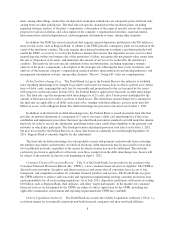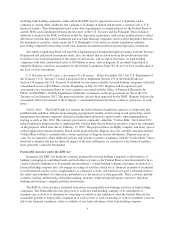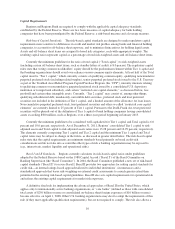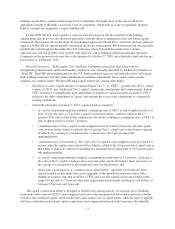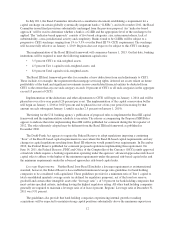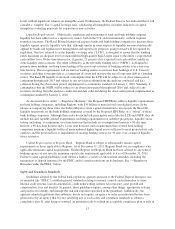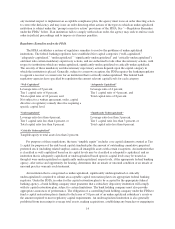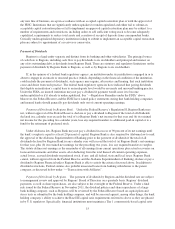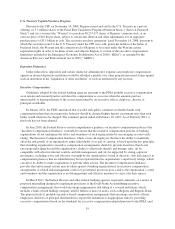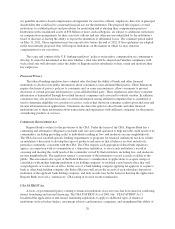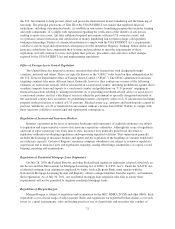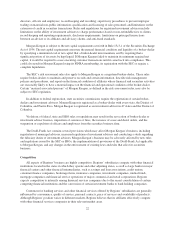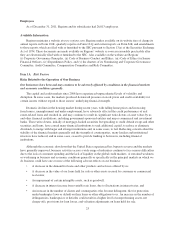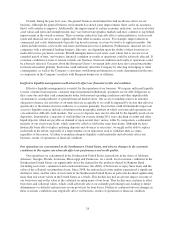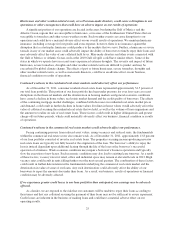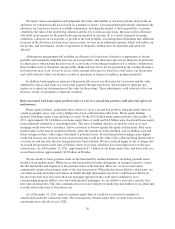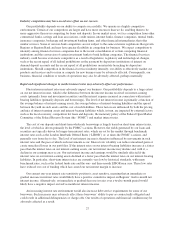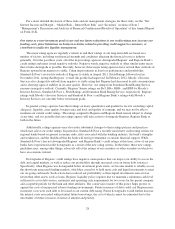Regions Bank 2011 Annual Report Download - page 42
Download and view the complete annual report
Please find page 42 of the 2011 Regions Bank annual report below. You can navigate through the pages in the report by either clicking on the pages listed below, or by using the keyword search tool below to find specific information within the annual report.the extraordinary challenges facing the banking industry, the FDIC amended the Restoration Plan to allow seven
years for the reserve ratio to return to 1.15 percent. In October 2009, the FDIC passed a final rule extending the
term of the Restoration Plan to eight years. This final rule also included a provision that implements a uniform
three basis point increase in assessment rates, effective January 1, 2011, to help ensure that the reserve ratio
returns to at least 1.15 percent within the eight year period called for by the Restoration Plan. In October 2010,
the FDIC adopted a new restoration plan to ensure the DRR reaches 1.35 percent by September 2020. As part of
the revised plan, the FDIC did not implement the uniform three-basis point increase in assessment rates that was
scheduled to take place in January 2011. The FDIC will, at least semi-annually, update its income and loss
projections for the DIF and, if necessary, propose rules to further increase assessment rates. In addition, on
January 12, 2010, the FDIC announced that it would seek public comment on whether banks with compensation
plans that encourage risky behavior should be charged higher deposit assessment rates than such banks would
otherwise be charged. See also “—Incentive Compensation” below.
We cannot predict whether, as a result of an adverse change in economic conditions or other reasons, the
FDIC will in the future further increase deposit insurance assessment levels. For more information, see the
“FDIC Premiums and Special Assessment” section of Item 7. “Management’s Discussion and Analysis of
Financial Condition and Results of Operation” of this Annual Report on Form 10-K.
FICO Assessments. In addition, the Deposit Insurance Funds Act of 1996 authorized the Financing
Corporation (“FICO”) to impose assessments on DIF applicable deposits in order to service the interest on
FICO’s bond obligations from deposit insurance fund assessments. The amount assessed on individual
institutions by FICO will be in addition to the amount, if any, paid for deposit insurance according to the FDIC’s
risk-related assessment rate schedules. FICO assessment rates may be adjusted quarterly to reflect a change in
assessment base. Regions Bank had a FICO assessment of $9 million in FDIC deposit premiums in 2011.
Acquisitions
The BHC Act requires every bank holding company to obtain the prior approval of the Federal Reserve
before: (1) it may acquire direct or indirect ownership or control of any voting shares of any bank or savings and
loan association, if after such acquisition, the bank holding company will directly or indirectly own or control 5
percent or more of the voting shares of the institution; (2) it or any of its subsidiaries, other than a bank, may
acquire all or substantially all of the assets of any bank or savings and loan association; or (3) it may merge or
consolidate with any other bank holding company. Effective July 2011, financial holding companies and bank
holding companies with consolidated assets exceeding $50 billion must (i) obtain prior approval from the Federal
Reserve before acquiring certain nonbank financial companies with assets exceeding $10 billion and (ii) provide
prior written notice to the Federal Reserve before acquiring direct or indirect ownership or control of any voting
shares of any company having consolidated assets of $10 billion or more. Bank holding companies seeking
approval to complete an acquisition must be well-capitalized and well-managed effective July 2011.
The BHC Act further provides that the Federal Reserve may not approve any transaction that would result in
a monopoly or would be in furtherance of any combination or conspiracy to monopolize or attempt to
monopolize the business of banking in any section of the United States, or the effect of which may be
substantially to lessen competition or to tend to create a monopoly in any section of the country, or that in any
other manner would be in restraint of trade, unless the anticompetitive effects of the proposed transaction are
clearly outweighed by the public interest in meeting the convenience and needs of the community to be served.
The Federal Reserve is also required to consider the financial and managerial resources and future prospects of
the bank holding companies and banks concerned and the convenience and needs of the community to be served.
Consideration of financial resources generally focuses on capital adequacy, and consideration of convenience and
needs issues includes the parties’ performance under the CRA, both of which are discussed below. The Federal
Reserve must also take into account the institutions’ effectiveness in combating money laundering. In addition,
pursuant to the Dodd-Frank Act, the BHC Act was amended to require the Federal Reserve to, when evaluating a
proposed transaction, consider the extent to which the transaction would result in greater or more concentrated
risks to the stability of the United States banking or financial system.
18


